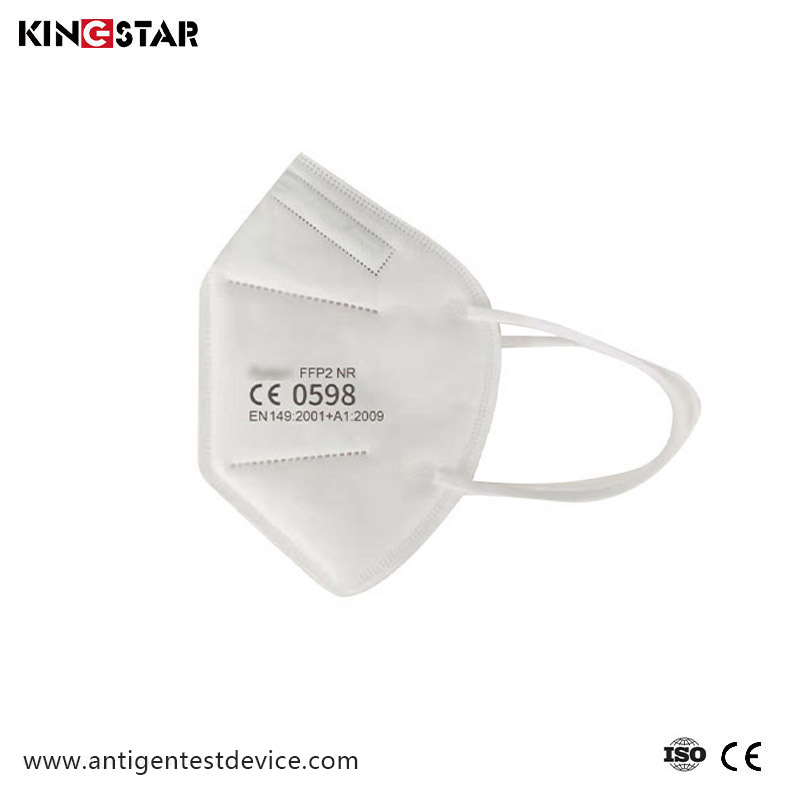Why do you need an FFP2 Protective Face Mask?
2024-10-22

Why should you use an FFP2 protective face mask?
An FFP2 protective face mask offers several benefits, including:
- Protection against both solid and water-based airborne particles
- Easily available in the market
- Tight-fitting seal that ensures no particles enter through the sides
- Good breathability, making it easy to wear for long periods
- Effective in filtering out particles as small as 0.3 microns
How does an FFP2 protective face mask compare to other masks?
An FFP2 protective face mask is more effective than a surgical face mask in filtering out airborne particles. A surgical face mask primarily offers protection against liquid-based particles and is loose-fitting, making it less effective in filtering out smaller airborne particles.
Compared to an N95 mask, an FFP2 mask has a lower filtration capacity, but it is easier to breathe through, making it more comfortable to wear for extended periods.
Are there any guidelines on when to use an FFP2 protective face mask?
The Centers for Disease Control and Prevention (CDC) recommends that FFP2 masks be used in healthcare settings where respiratory protection is needed, such as during aerosol-generating procedures. In the community setting, FFP2 masks may be considered for use by individuals who are at higher risk of contracting airborne diseases, including healthcare workers and individuals with underlying medical conditions.
How should you wear an FFP2 protective face mask?
It is essential to follow proper guidelines when putting on an FFP2 protective face mask to ensure that it is effective in filtering out particles. The mask should be put on with clean hands, and the nose and mouth must be covered entirely. The mask must be sealed tightly around the edges, and there should be no gaps through which particles can enter.
Can FFP2 protective face masks be reused?
FFP2 protective face masks are designed for single-use only. After being used, the mask must be disposed of safely. Reusing the mask may compromise its effectiveness in filtering out particles, and it may also increase the risk of infection.
Conclusion
An FFP2 protective face mask is an effective tool in preventing the spread of airborne diseases and protecting individuals from hazardous particles in the air. It is important to use the mask as per the recommended guidelines to ensure its maximum effectiveness.
KINGSTAR INC is a leading provider of a wide range of personal protective equipment products, including FFP2 protective face masks. Please visit our website https://www.antigentestdevices.com to learn more about our products and services. For any inquiries, please feel free to contact us at info@nbkingstar.com.
Research Papers:
Prather, K. A., Wang, C. C., & Schooley, R. T. (2020). Reducing transmission of SARS-CoV-2. New England Journal of Medicine, 383(13), 1283-1285.
Mattiuzzo, E., Foresti, O., & Cassini, R. (2020). Universal use of facemasks during pandemic: Rationale and analysis of a countrywide policy in Switzerland. Swiss Medical Weekly, 150, w20225.
Gostin, L. O., & Wiley, L. F. (2020). Governmental public health powers during the COVID-19 pandemic: stay-at-home orders, business closures, and travel restrictions. Jama, 323(21), 2137-2138.
Vohra, F., Goodwin, R., & Banerjee, A. K. (2021). The need for respiratory protection in the COVID-19 pandemic: an in-depth literature review. Frontiers in Public Health, 9, 618959.
Ebrahim, S.H., Ahmed, Q.A., Gozzer, E., Schlagenhauf, P. and Memish, Z.A., (2020). Covid-19 and community mitigation strategies in a pandemic. BMJ, p.m1066.
Brooks, J. T., Butler, J. C., & Redfield, R. R. (2020). Universal masking to prevent SARS-CoV-2 transmission–the time is now. Jama, 324(7), 635-637.
Esposito, S., & Principi, N. (2011). To mask or not to mask children to overcome COVID-19. European Journal of Clinical Investigation, 41(11), 1163-1165.
Liu, Y., Chen, H., Tang, W., Guo, Y., & Liu, J. (2021). Effectiveness of N95 respirators versus surgical masks against influenza: A systematic review and meta-analysis. Science China Life Sciences, 1-8.
Zhao, Y., & Wei, Q. (2020). Comparative study of different personal protective equipment on preventing COVID-19 infection among medical personnel. Materials Today Chemistry, 17, 100306.
Kampf, G., Todt, D., Pfaender, S., & Steinmann, E. (2020). Persistence of coronaviruses on inanimate surfaces and their inactivation with biocidal agents. Intensive Care Medicine, 46(5), 957-958.
Rubin, E. J., & Baden, L. R. (2020). Audio interview: confronting the pandemic. New England Journal of Medicine, 382(24), e102.



